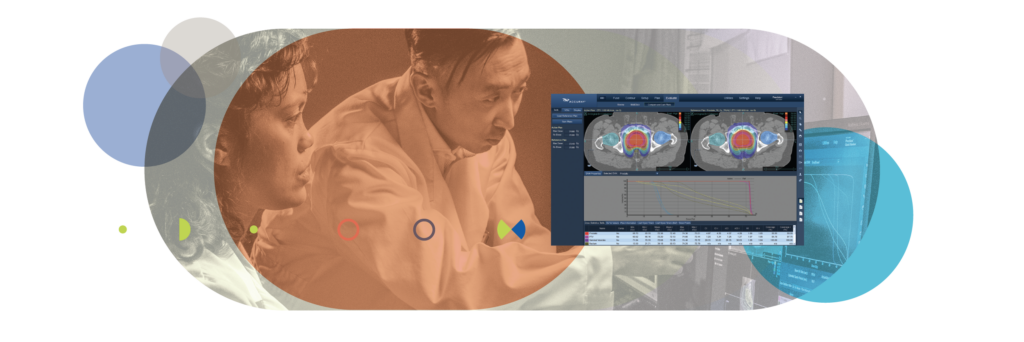The pandemic rapidly forced major shifts in the delivery of healthcare, while accelerating the maturity of many emerging trends. As the dust settles into an endemic phase, many fields of medicine now recognize entirely new capabilities and possibilities revealed by these forced changes.
Remote treatment planning stands as a prime example. The early phase of the pandemic took something that had been discussed for decades as a potential solution to expanding access and increasing efficiency and demonstrated that remote treatment planning was not just possible, but easily achievable for many clinics and health systems.
Radiotherapy treatment planning: An ideal target for remote enablement
The field of radiotherapy has long recognized misalignments in supply and demand for treatment. Access to radiotherapy is markedly insufficient in low- and middle-income countries[1]. But access to radiotherapy is an issue across developed countries, as well. In many areas, radiation therapy centers are located in urban centers. For example, in the U.S., 9 in 10 radiation oncologists work in urban or suburban communities, with the proportion of those practicing in rural areas declining. Approximately 19.3% of the population live in rural areas causing an imbalance to support high-quality oncology care[2].
Compounding this supply issue, the incidence of cancer continues to grow across the globe, and more than half of those diagnosed will require some form of radiotherapy treatment. Some studies even suggest cancer incidence rates might be higher in areas with less access to radiotherapy[2].
Access to technology is certainly a large component of this problem. Yet, advances in radiotherapy treatment delivery systems and enhancements to global supply chains mean radiotherapy technologies are more readily available to more hospitals and health systems than ever.
Staffing remains a chief barrier limiting access to radiotherapy both in developing and developed countries. This barrier is growing more concerning given the emerging shortage of medical physicists and radiation oncologists that has been predicted for the last decade [3,4].
Radiotherapy treatment planning: An ideal target for remote enablement
Treatment planning workflows present an ideal target for remote enablement. For at least the last decade, discussion has focused on how physicists and radiation oncologists can conduct treatment planning, review, approval and even ongoing monitoring from remote settings.
Some radiotherapy clinics pioneered remote radiotherapy treatment planning models long before the pandemic. One well-documented example in rural Canada featured a network of radiotherapy clinics each with on-site teams of radiation therapists and physicists[5]. Radiation oncologists work from a central hub, travelling to each satellite clinic for in-person consults and follow-up visits. This network of clinics had been successfully delivering care through this remote-enabled model since 2010.
Pandemic forces clinics to test out fully-remote model
From the start of the pandemic, concerns about physical distancing pushed healthcare providers to look for opportunities to shift people and processes to a remote basis. Many clinics and larger health systems experimented with remote-enabled treatment planning models for radiotherapy.
In the months and years since, research and case studies demonstrate that these experimental models, while not flawless, were largely successful in preserving the quality of treatment plans, protecting patient outcomes and maintaining patient satisfaction[5,6].At a more functional level, these successful examples enabled physicists and radiation oncologists to generate and approve radiotherapy treatment plans for patients around the country, without being physically present for treatment sessions and other treatment workflows.
For example, the system of radiotherapy clinics in Ontario noted above made a shift to a fully-remote model with each satellite location delivering radiotherapy treatments entirely without the physical presence of a radiation oncologist.
Remote treatment planning is a powerful strategy to expand access
As mentioned, innovative thinkers in the field have long eyed remote treatment planning as a powerful strategy to expand access, increase clinical efficiency and resolve misalignment of human clinical resources. Now, these real-world case studies and published research demonstrate that this model is achievable and preserves key clinical outcomes.
Forward-thinking leaders in the radiotherapy world are building on this momentum, expanding the implementation and utilization of remote treatment planning technologies, processes and strategies to deliver a number of benefits from a patient, provider and broader public health perspective:
- Expanding patient access: Remote treatment planning can give more people access to high-quality radiotherapy care. The remote model will enable the development of treatment networks in developing, rural, and underserved areas.
- Increasing clinical efficiency/driving economic wellbeing: Remote treatment planning enables more efficient utilization of clinical human resources in radiotherapy practices. Physicists and radiation oncologists can manage key responsibilities from a central location — anytime, anywhere — eliminating travel time.
- Enhancing satisfaction and retention: Remote treatment planning can help to solve the supply-and-demand challenge, as well as increasing (or at least preserving) the supply of physicists and radiation oncologists by boosting job satisfaction and promoting retention.
- Making advanced treatment modalities more practical: Efficiencies gained through remote treatment planning can make more advanced treatment modalities and techniques more economically practical for clinics.
As an example remote treatment planning workflows could expand access of adaptive radiotherapy treatments. The re-planning and re-approval components of adaptive radiotherapy (ART) make the approach time- and labor-intensive — limiting it’s application. But shifting workflows to a remote basis drive significant efficiencies. This streamlined, remote-enabled approach to ART will change the calculus on when ART is the right option for patients — and in the future will allow clinics to deliver the benefits of ART to more patients.
The next frontier: Deep learning-based auto-segmentation
The use of remote treatment planning will grow significantly across both developed and emerging markets in the coming decade. But innovators like Accuray are already exploring the next frontier by leveraging Limbus artificial intelligence (AI)-driven autocontouring algorithms – enabling automated contouring to further streamline the treatment planning process that will support remote treatment planning and the adaptive workflow.
These next-generation technologies will enable the Accuray Precision® software to automate substantial aspects of treatment planning workflows, enabling optimal treatment planning in a shorter period of time. This will empower members of the clinical team to optimize the utilization of their unique knowledge and skill set, focusing on exploring alternative treatment plans and fine-tuning and adapting plans, while still driving patient volume.
Proven remote treatment planning case studies demonstrate that physicists and radiation oncologists can oversee from a distance on a centralized platform — reviewing, adjusting and approving treatment plans before they are delivered. This truly helps to expand access to both conventional and leading-edge radiotherapy treatments — without compromising clinical quality, patient satisfaction, and longer-term patient success.
References
- Shekinah Nefreteri Cluff Elmore et al (2019) The global radiation oncology workforce in 2030: Estimating physician training needs and proposing solutions to scale up capacit. Applied Radiation Oncology.
- Denise Myshko (2021) Shortage of cancer care providers in rural areas affects patient outcomes. OncLive
- Atom Physics Staffing is Revolutionizing Critical Support (globenewswire.com)
- The Future of our Field – ASTRO Blog- American Society for Radiation Oncology (ASTRO) – American Society for Radiation Oncology (ASTRO)
- Claire Romani et al (2021) The Operation of Canada’s Only Virtually Operated Radiation Oncology Service During the COVID-19 Pandemic. Advances in Radiation Oncology. V:6 I: 3.
- Alex Price et al (2020) Implementing a novel remote physician treatment coverage practice for adaptive radiation therapy during the coronavirus pandemic. Advances in Radiation Oncology. V:5 I:4. P737-742









